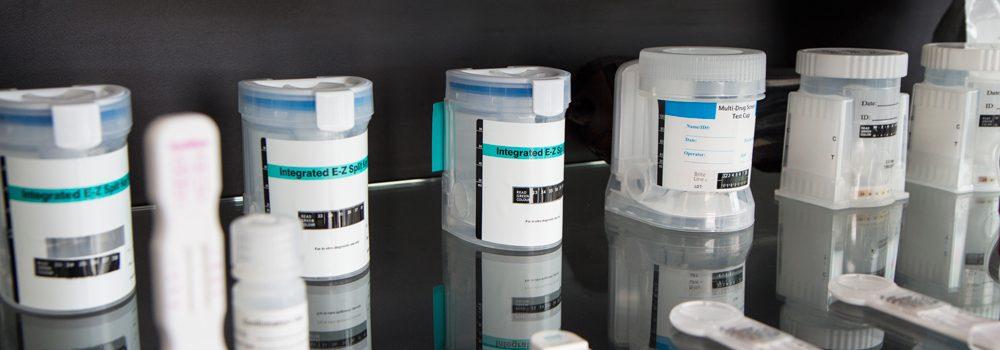Malaysia’s drug-landscape is shifting. Synthetic stimulants (especially amphetamine-type stimulants) dominate use and treatment admissions, new delivery methods (vape/Kpods) are raising alarm, and an emerging law-enforcement profile shows ~85 % of arrests are for minor possession rather than trafficking. Staying ahead requires updated testing panels, clear workplace policies and awareness of novel form.
Why this update is important
The last time we published the “commonly used drugs in Malaysia” guide, the dominant narrative was heroin, cannabis and traditional injectable opiates. But in recent years the picture has changed significantly. According to AADK, the number of reported drug users and addicts increased 32.5% from 2023 to 2024.
At the same time, Channel News Asia reported that new formats of use — notably discreet vapes or “Kpods” carrying un-gazetted substances — are emerging and present major enforcement and health-risks.
Meanwhile, it was also reported by CodeBlue that 85% of Malaysia’s drug arrests in 2023 were for those caught with small amounts or for alleged use, rather than classic supply/trafficking offences.
All of this means workplaces, testing providers and policy-makers must adjust their approach.
Quick snapshot: the numbers you need to know right now
- 2024: 192,857 drug users/addicts recorded in Malaysia, a 32.5% increase from 2023.
- Around 61 % of these users were aged between 15-39.
- In treatment admissions, amphetamine-type stimulants (ATS) were involved in over 70% of cases, followed by opiates (~23%) and cannabis (~4%).
- 2023 arrests: ~179,799 for drug offences; only ~15% related to supply/trafficking, leaving ~85% for minor possession or alleged use.
These shifts show that testing, policy and awareness cannot rely solely on “classic” drug types and supply-lines.
Updated list: commonly used drugs in Malaysia (2025 notes)
Here’s a breakdown of major substances, current trends, health risks and testing notes.
Amphetamine (AMP) type stimulants (ATS)
- What it is: Methamphetamine, amphetamine and similar stimulants.
- Trend: Dominant class in recent years — involved in over 70% of treatment admissions.
- Why used locally: Cheap, powerful, available in tablet or crystalline form; appeals to young users and continues as a primary “street” stimulant.
- Health risks: Elevated risk of psychosis, violence, cardiovascular strain, dependence.
- Testing notes: Ensure workplace screening includes amphetamine + methamphetamine panel; some newer analogues may require broader panel or confirmatory testing.
Opiates (OPI/MOR)
- What it is: Traditional opioids, including heroin, morphine derivatives.
- Trend: Still present (~23% in recent figures) but losing relative ground to synthetics.
- Why used locally: Long-established in Malaysian illicit market; ties to older user cohorts and certain regional supply routes.
- Health risks: Overdose risk, injection-related illness, withdrawal syndromes.
- Testing notes: Opiate panels remain relevant; new synthetic opioids may challenge detection.
Cannabis (THC)
- What it is: Marijuana, hashish, CBD preparations albeit illicit under Malaysian law.
- Trend: Lower proportion (~4% in one dataset) but still regular in certain user groups. Also most commonly used illicit drug in the world.
- Why used locally: Recreational use, emerging global normalization influences, perceived lower risk among youth.
- Health risks: Lung issues (if smoked), mental health effects in high-use groups, legal penalties remain severe.
- Testing notes: Standard cannabis-THC panels are applicable; note that some workplaces may exclude cannabis but include synthetic cannabinoids.
Ketamine (KET)
- What it is: A dissociative anaesthetic misused for recreational purposes.
- Trend: Historically noted in Malaysia but less prominent than ATS in recent years.
- Why used locally: Club/nightlife scene, sometimes substituted when traditional opiates are harder to access.
- Health risks: Bladder damage, dissociative states, mental health consequences.
- Testing notes: If your testing panels don’t include ketamine, consider adding it given its ongoing availability.
Kratom/Ketum (KRA) / traditional plant products
- What it is: Leaves of Mitragyna speciosa (kratom) and other locally-used plant-based substances.
- Trend: Often under-reported in official statistics, but remains relevant in certain rural/risk-populations.
- Why used locally: Traditional use, self-medication, cheaper alternative.
- Health risks: Dependence, hepatic strain, mixture risks when combined with other drugs.
- Testing notes: Many standard panels do not detect kratom; if your audience covers fringe use, consider advisory language.
Vape-delivered substances (Kpods / drug-laced vapes)
- What it is: E-vaporisers (vapes) used to deliver illicit compounds, sometimes non-gazetted substances such as etomidate, THC analogues, synthetic sedatives.
- Trend: Rapidly emerging among younger users; authorities flag the “Kpod” format as a new frontier of supply/distribution.
- Why used locally: Discreet, mobile, off radar; marketed with fruity flavours, sold via social apps; challenging detection/enforcement.
- Health risks: Unknown chemical mixes, high potency, overdose risk, regulatory lag means uncertain treatment pathways.
- Testing notes: Standard urine/ saliva panels may not detect novel compounds; employers and testing providers should consult latest intelligence and consider broader toxicology or confirmatory lab testing for unexplained positives/negatives.
Implications for workplace & organisational testing
Given the updated drug-use trends, workplaces and testing programmes in Malaysia should consider the following adjustments:
-
Screening panels must reflect ATS dominance
- Ensure your drug-test kits include methamphetamine/amphetamine detection (and their common analogues).
- Since ATS make up the majority of recent cases, missing this panel could leave a major gap.
-
Broaden awareness of novel delivery formats
- Vape-based delivery (Kpods) may carry substances not yet listed in standard panels; consider using confirmatory laboratory panels or expanded testing if you observe unexplained symptoms or negative test results despite suspicion.
- Update supplier/vendor contracts and procurement criteria to include knowledge of NPS (new psychoactive substances) and unknown compounds.
-
Policy update: clearly define prohibited substances and formats
- Explicitly include e-vaporisers/Kpods as part of your AOD policy.
- Set expectations for disclosure of legal medication, recovery pathways, random or for-cause tests, return-to-work testing.
-
Training & record-keeping
- Train supervisors and safety officers on current substance-use trends (ATS, vapes, NPS) not just “heroin/cannabis”.
- Maintain chain-of-custody, calibration logs, audit-ready records, and align testing procedures with defined policies.
By adapting in these ways, organisations can strengthen their defensible position, support safety-culture and align with Malaysia’s evolving landscape.
In short: Malaysia’s drug-use landscape has changed.
Amphetamine-type stimulants hold the lead, vape/Kpod delivery is disrupting detection and enforcement, and the majority of arrests now involve minor possession rather than trafficking. For workplaces and testing providers this means updating screening panels, revising AOD policies, training supervisors on emerging formats and keeping records audit-ready.
If you’d like to review your drug-screening panel, update your AOD policy or implement a defensible testing program tailored for Malaysia, contact us for a free consultation.
Disclaimer: The information provided in this article is for general reference only. Please seek advice from professionals according to your business’s needs.
Written by Andatech Malaysia









